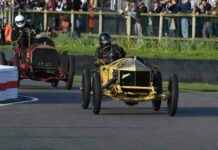Just got my hands on Art Garner’s “Black Noon” and let me tell you, it’s like the holy grail for race fans. At 28, I’m more of a YouTube racing history buff, but this book really brought the past to life for me. Now, I’ve worked behind the scenes at Mid-Ohio and been a die-hard 500 fan since ’94. So, I’ve seen racing from all angles. Some drivers, like Foyt, kept their distance to avoid the pain of losing a friend. But with today’s media and sponsor obligations, drivers are practically glued at the hip. Wonder if there are still some loners in the IndyCar world today.
Now, let’s talk about innovation at the Speedway. People often blame the lack of it for Indy’s decline in excitement. But with cars hitting 220mph, tinkering with design could be a recipe for disaster. Back in the day, Mickey Thompson’s “build first, ask questions later” approach was risky even at 150mph. Let’s just say, A.J. still thinks rear-engine cars are not his cup of tea, especially the 1987 March he’s called a “tub of s***”.
So, why should we care about how drivers interact, or if IndyCar should embrace innovation when the real question is, can we bring back the good old days? Maybe it’s just me, but let’s dive into the heart of the matter.
The IndyCar paddock has seen a shift in how drivers relate to each other over the years. Back in the day, legends like Herk and Parnelli were tight, while A.J. preferred to keep his distance. Today, the Big 3’s mega teams mean drivers are practically roommates. It’s like a reality show, but with race cars. Not really sure why this matters, but it’s interesting to see how relationships have evolved in the racing world.
When it comes to innovation at the Speedway, some folks think Indy has lost its edge without the wild ideas of the past. But with cars zooming at breakneck speeds, maybe playing it safe isn’t such a bad idea. Mickey Thompson was a trailblazer, but pushing boundaries at 220mph might be a bit too risky. Just my two cents, but maybe sticking to near-spec cars isn’t such a bad idea after all.
As for A.J.’s thoughts on rear-engine cars, he’s not one to mince words. His colorful language for the 1987 March says it all. Not really sure why this matters, but it’s clear that some things never change. Even with all the advancements in racing, some folks will always prefer the good old days.
In the end, the question remains: do we need to go back to the past to move forward in racing? Maybe it’s just me, but it’s worth taking a closer look at how history shapes the present in the world of motorsports.












